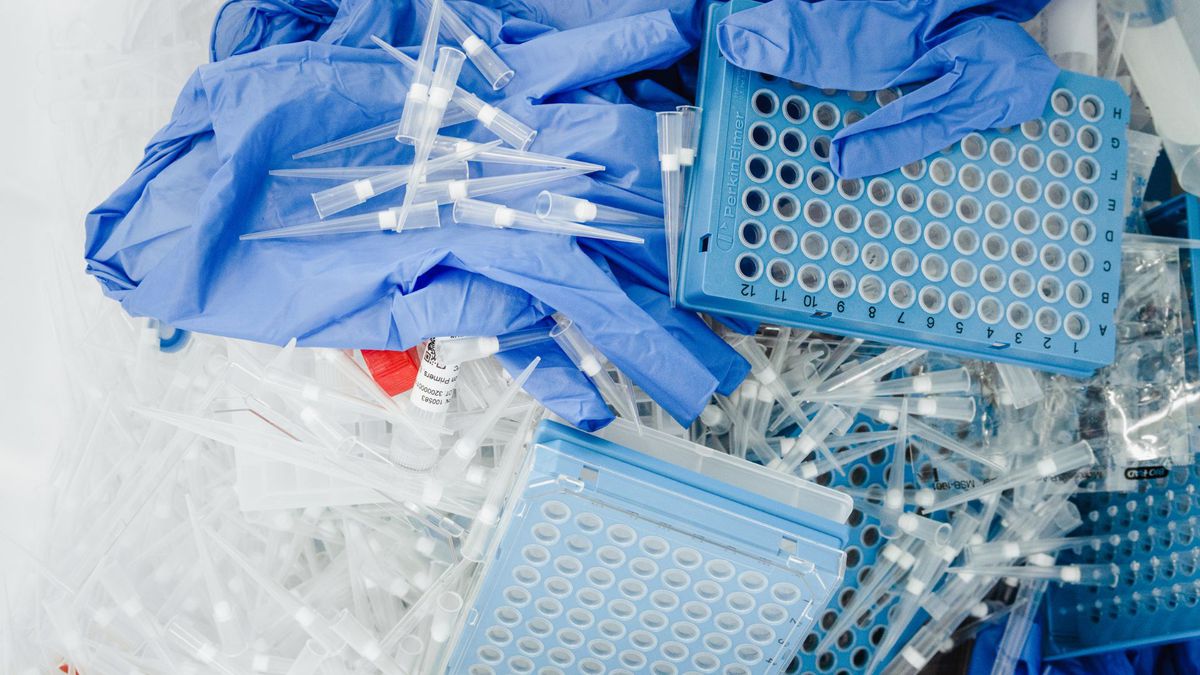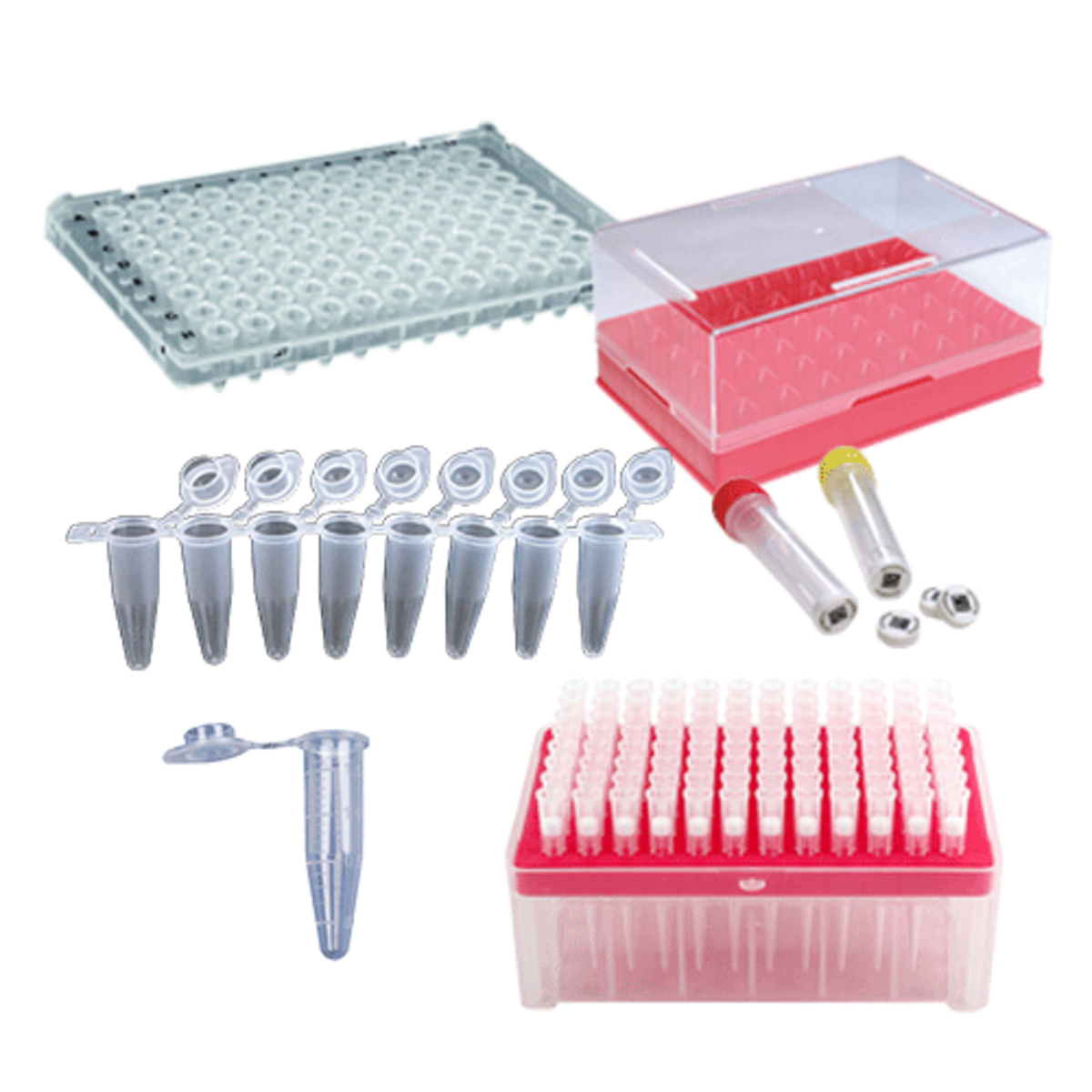Research laboratories are estimated to generate more than 5 million tons of plastic waste each year¹. Much of this comes from single-use items such as pipettes, microplates, and tips, together with the associated packaging. To mitigate this environmental impact, researchers and suppliers are adopting more sustainable working practices, while governments and funding agencies are under increasing pressure to incentivise greener approaches.

From glassware to single-use plastics
Until the mid-20th century, glassware was standard in most research labs. The expansion of the plastics industry in the 1950s and 60s led to a shift towards disposables, which were considered more convenient and provided greater experimental reproducibility. For example, the availability of pre-treated plastic culture vessels offered more consistent cell attachment compared with manually coated glass dishes. Today, glassware has largely been replaced by single-use plastics across a wide range of applications.
Why plastic labware is rarely recycled
A key drawback of disposable plastic labware is that it is often classified as non-recyclable. This is due to two main factors:
Contamination risk – plastics that have been in contact with biological material, chemicals, or potentially infectious samples must usually be autoclaved and disposed of as landfill waste.
Mixed materials – many items combine different polymers or additional components that complicate recycling. For example, centrifuge tubes often pair a polypropylene body with a high-density polyethylene (HDPE) cap, while tissue culture flasks may contain rubber seals or paper filters.
As a result, even plasticware that has only held water is commonly treated as hazardous and discarded.
Practical steps to reduce plastic waste
Researchers can contribute to waste reduction by rethinking, reducing, reusing, and recycling wherever possible. Approaches include:
Scrutinise experimental design
Optimising how experiments are planned can help minimise consumption. For instance, switching from 96-well to 384-well plates provides more data points per vessel and conserves precious samples. Using automated plate washers instead of multichannel pipettes reduces tip use, while applying best pipetting practices helps avoid unnecessary repeats.
Consider glass alternatives
In some cases, plasticware can be replaced with glass equivalents. Examples include hemocytometers, buffer bottles, and certain flow cytometry tubes. Glass items must be autoclaved before use if sterility is required, and any switch should be validated to ensure results are not compromised. Over time, glassware can also prove more cost-effective than disposables.
Reduce packaging waste
Packaging is a major contributor to laboratory plastic waste. Options to address this include purchasing consumables in bulk, establishing centralised repositories shared across labs, and checking whether suppliers accept packaging returns. Researchers can also review whether items such as serological pipettes need to be individually wrapped, and explore eco-friendly refill systems for pipette tips.
Reuse gloves where appropriate
Gloves are essential for safety and contamination control, yet not every task requires a fresh pair. For low-risk procedures such as replacing buffers, inserting tubes, or retrieving data, gloves may be safely reused. This reduces both plastic waste and costs.
Switch to powdered buffers
Traditionally, many labs purchase pre-formulated liquid buffers in plastic bottles. A more sustainable alternative is powdered buffer formulations supplied in pouches. These are optimised for rapid dissolution and standard pH adjustment, and typically yield 100 ml or 1 L of buffer upon reconstitution.
Choose flexible kits
Kits for routine applications often contain components that are used up at different rates. Selecting kits with the option to purchase individual components helps reduce excess packaging and waste.
Wash or repurpose plasticware
Plasticware that has not been exposed to biohazards can often be washed and reused. For example, reservoirs used only for phosphate buffered saline (PBS) can be rinsed and air-dried for reuse. Centrifuge tubes can serve as counterbalances, and empty tip boxes can be repurposed to store aliquoted reagents.
Staying updated on sustainability initiatives
Sustainability is a major focus across scientific industries, with new solutions regularly emerging. Recent examples include:
Development of a cell culture dish with the surface area of three standard petri dishes but 61% less plastic and 67% lower storage volume²
Introduction of the ACT label by My Green Lab in 2017, designed to support informed purchasing decisions³
By staying informed about such initiatives, researchers and institutions can continue to improve their environmental footprint.

How LubioScience can support your sustainability goals
LubioScience represents trusted international brands and partners who are actively working to reduce laboratory plastic waste. We are committed to supporting researchers in adopting more sustainable practices, from providing eco-friendly product options to advising on greener laboratory workflows.
Contact us today to discuss how we can help your lab reduce its environmental impact.
Read more about our contribution to the enviroment:
References
- Urbina, M., Watts, A. and Reardon, E. Labs should cut plastic waste too. Nature 528, 479 (2015).
- Réu P, Svedberg G, Hässler L, et al. A 61% lighter cell culture dish to reduce plastic waste. PLoS One. 2019;14(4).
- My Green Lab – ACT label

